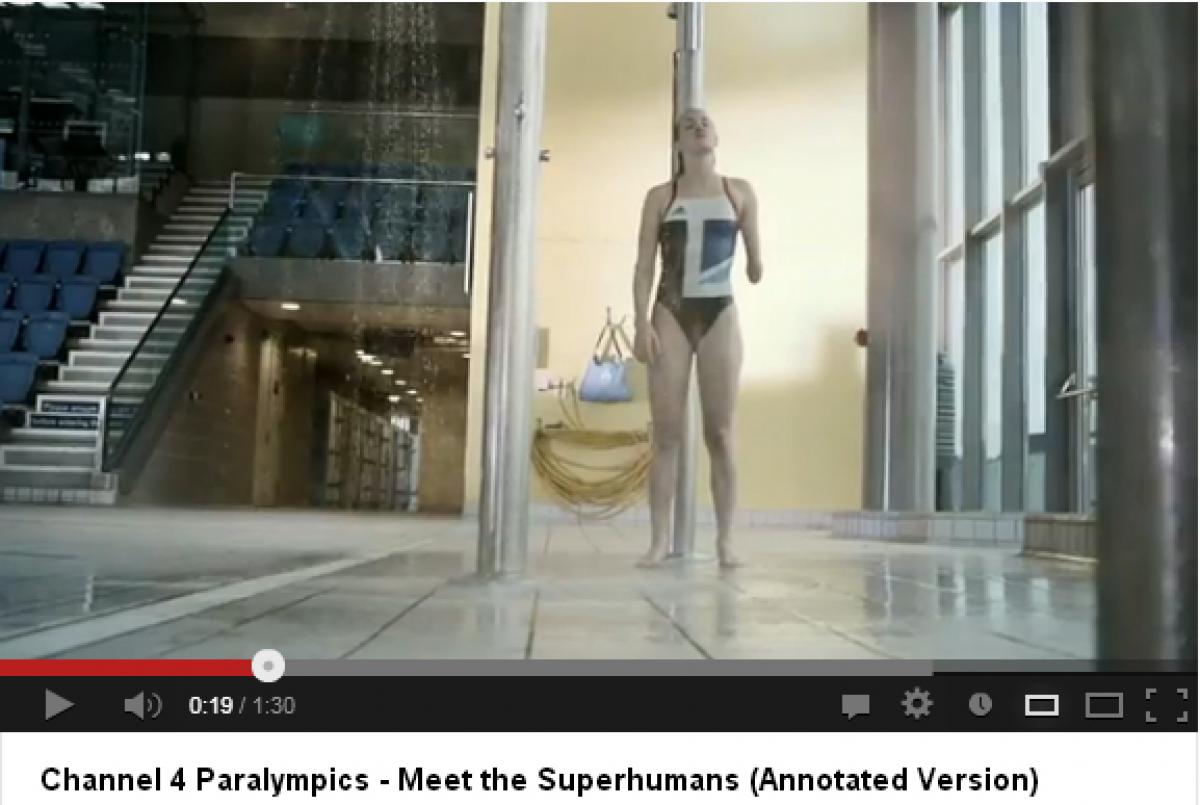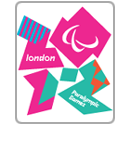Natalia Dannenberg: A digital revolution
London 2012 saw a seismic shift in the way the media covered Paralympic sport. The IPC’s resident digital expert, Natalia Dannenberg, blogs about how media coverage changed. 20 Dec 2012
Channel 4 video screen grab
"For the first time, the Paralympic Games stopped taking itself too seriously – and it became even cooler."
London 2012 was extraordinary in terms of the media coverage.
The numbers speak from themselves: a cumulative non-UK audience of 3.4 billion people and within the UK, 40 million people – two thirds of the country’s population – saw the Paralympics on TV.
But it’s not all about the numbers.
Something else changed.
The Paralympics became cool and edgy.
Instead of getting the violins out to tell a heart-wrenching sob story about how an athlete got their impairment, it was all about sport.
And there wasn’t an ounce of pity in sight.
The No. 13 Paralympic Moment of 2012 is all about how Channel 4 led the way with their “Meet the Superhumans” campaign.
Channel 4 portrayed Paralympians as fiercely competitive high achievers rather than people with an impairment, who just happened to do sport. Their coverage was hard hitting and gritty, confronting viewers to accept disabilities and focus on abilities.
The campaign has won tonnes of awards, and was a reflection of a general shift in Paralympic broadcasting.
Germany’s public TV stations ARD and ZDF produced a combined Olympic-Paralympic ad campaign which showed that the Paralympics were no longer just niche programming for them.
The slogan of the promo film was: “Two athletes. One Goal. Giving their all.”
It depicted Olympic and Paralympic swimmers Franziska Schreiber and Christiane Reppe, track and field athletes Rene Mählmann and Markus Rehm as well as archers Wiebke Nulle and Tanja Schultz.
As Olympian Mählmann runs along the track, his body morphs into amputee track and field athlete Rehm. As Schreiber dives into the pool, her right leg disappears and she transforms into Reppe.
It’s stylish, modern and compelling.
The goal of the campaign was not only to show that the channel’s coverage would be top class, but also to achieve more recognition for Paralympic sport and show the parity between the Olympics and Paralympics.
For too long the Paralympic Games have been on the side-lines. It is exciting to see them now entering the mainstream.
This was underlined by Google’s choice to include four scenes from the Paralympics in their 2012 Google Zeitgeist film – a three-minute film that has already enjoyed over four million views.
Broadcasters this year did not just show this ultra-sleek, uber-cool side of the Paralympics, they also taught us to laugh about disability.
This wasn’t done in a cruel or mocking way, but what it did achieve was to brush off some of the awkwardness, break down some of the taboos about the Paralympics and above all allow people to speak freely without inhibitions.
For the first time, the Paralympic Games stopped taking itself too seriously – and it became even cooler.
Channel 4’s Last Leg show fronted by comedian Adam Hill and ABC’s comedy segment on the Evening Show as well as ‘Kane &Disabled’ (a humorous behind-the-scenes series that ran before the Games) all helped to do this.
As Paralympians became hip and started to be people to aspire to, Sponsors like Sainsbury’s used them as role models in ad campaigns.
Samsung too launched a viral video: “Sport Doesn’t Care Who You Are”, which was particularly unsympathetic – and I don’t mean that in a negative sense. As athletes train to military-style music, their coaches yelling at them, there is no point where you feel sorry for them because they are blind or no longer have a limb. You are completely swept away by their focus and drive.
Part of the Samsung campaign was to give 50 Paralympic athletes a mobile phone with which to record video blogs. Suddenly we saw athletes with their children and men in the bath tub, and we stopped seeing that they were wheelchair users or had cerebral palsy.
The Samsung Paralympic Bloggers videos showed the human side of the Games and helped fans to appreciate Paralympians as people.
National Paralympic Committees like Australia and Canada, were also successful in changing the tone of TV coverage.
The Canadian Paralympic Committee led the way in its edgy “Super Athletes” campaign as well as the ‘Unstopable’ ad in which an amputee runner is seen sprinting through scenes from his own car accident. Both films defy you to feel anything but admiration and respect.
The Australian Paralympic Committee found creative ways to affirm the Paralympic identity. This wasn’t just “the other Olympics” or the “Paraolympics”.
Australia’s “I am a Paralympian” film made sure we realised that.
Together, the media coverage of the London Paralympic Games changed the way Paralympic sport is perceived.
No pity. Just sport.

 Facebook
Facebook
 Instagram
Instagram
 Twitter
Twitter
 Youtube
Youtube
 TikTok
TikTok
 Newsletter Subscribe
Newsletter Subscribe






